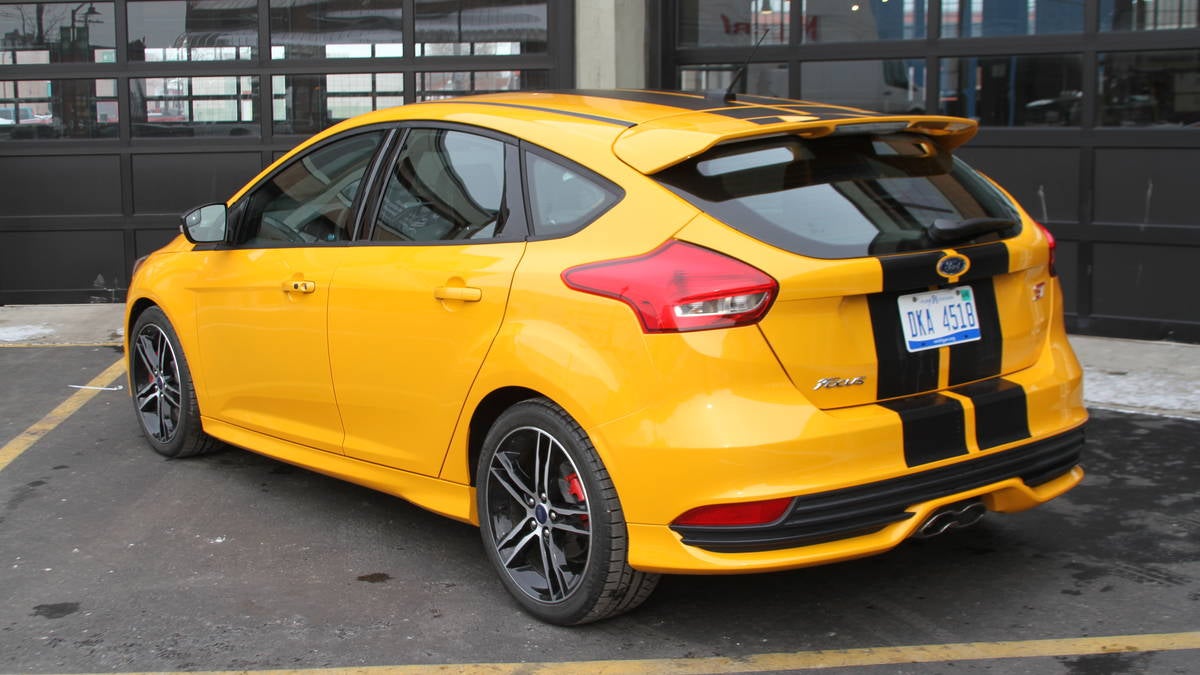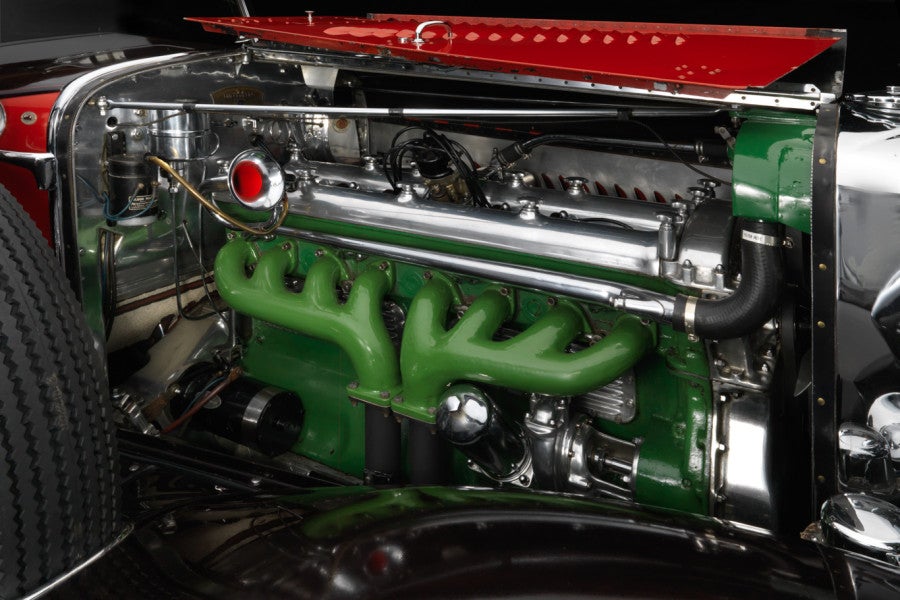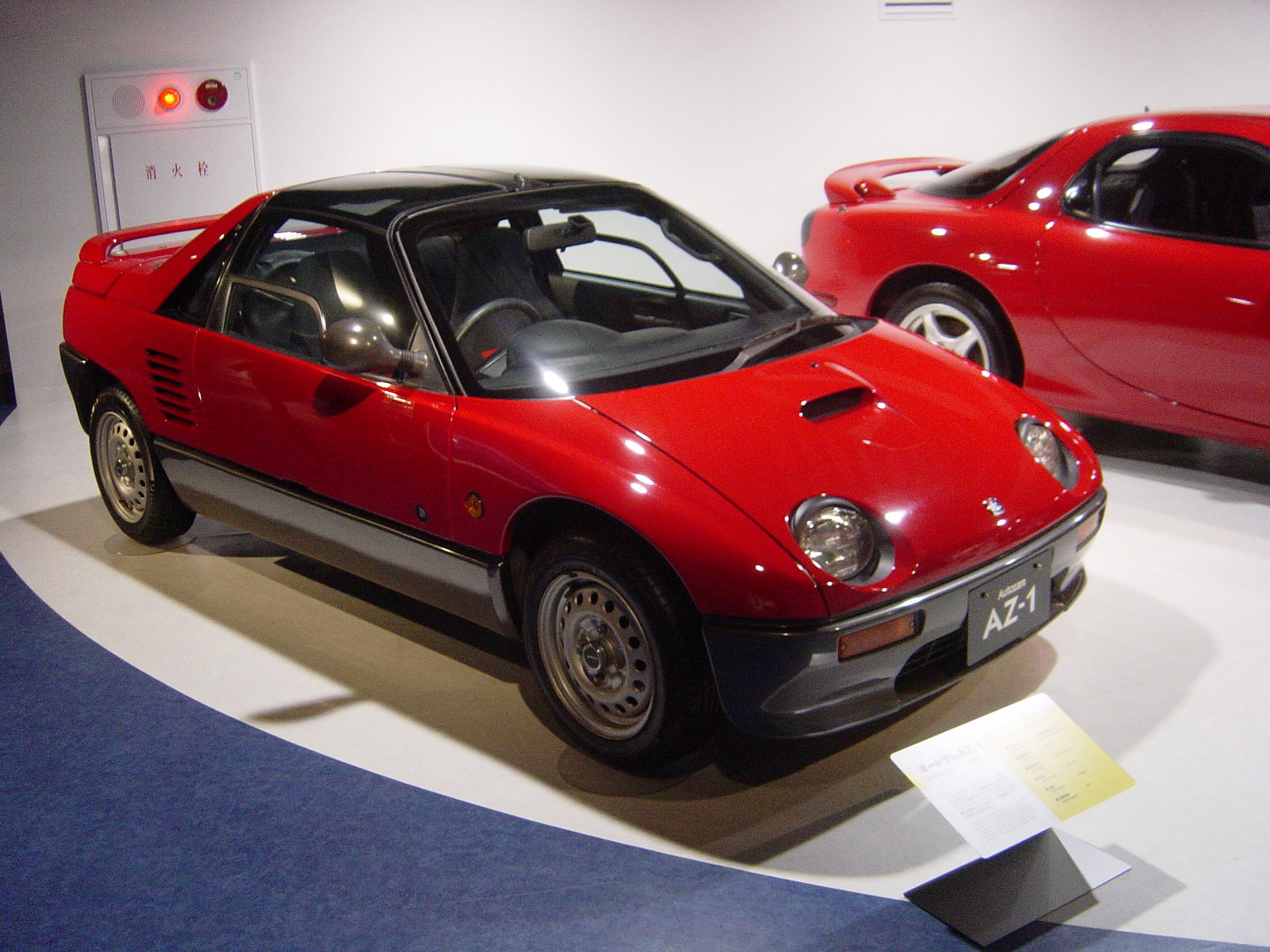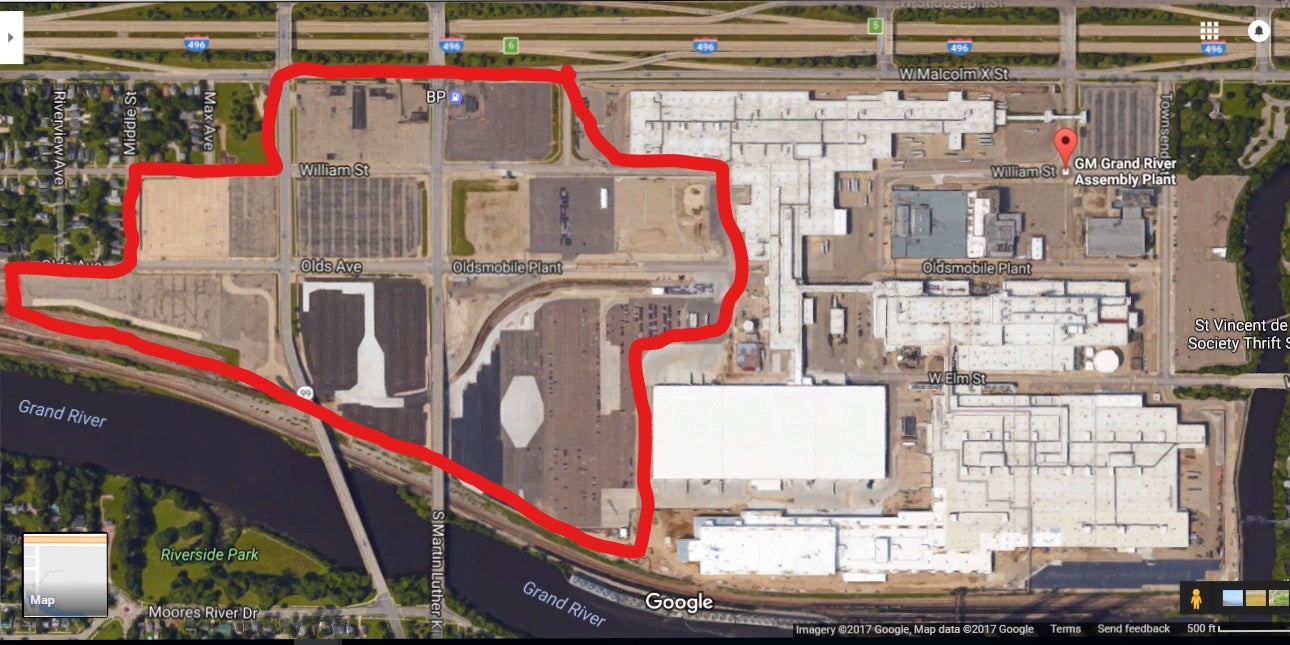 by "Swayze Train GTi" (swayzetrain)
by "Swayze Train GTi" (swayzetrain)
Published 01/04/2017 at 19:30
 by "Swayze Train GTi" (swayzetrain)
by "Swayze Train GTi" (swayzetrain)
Published 01/04/2017 at 19:30
Tags: auto industry
; golden age
; performance cars
; subprime loans
; ford
; pre war cars
; general motors
; dodge
; FCA
STARS: 13
The way I see it, there are two worrying things about the car industry right now. They cost too much, and thereís a plethora of exciting and groundbreaking options for all tiers of the market. Unfortunately, yes, this does mean Iím saying your favorite new car is indicative of a problem, specifically, that it is the harbinger of a bust in the auto market

Every bust is precipitated by a boom: we climb higher and higher, ignoring the warnings, before falling off the mountain. But when youíre on top of that mountain, the view is absolutely amazing. Today, there are very few objectively bad cars, just better competitors. For perspective, only 15 years ago, a group of people who knew full well what they were foisting upon consumers would happily sell you a Daewoo. Actually, thatís a bad example, but you get my point. Youíre not just spoiled for choice in the economy car section, there are great options for any type of vehicle you want, performance included.

And thatís where the red flag comes up. When everything is going well for you, it seems like itíll be that way forever. Car manufacturers are raking in the dough, and naturally they want to use some of that money to reach for the stars. They want to give the people who love cars what they lust for. We lust for fast, dramatic, well appointed cars that make us feel alive, even when weíre simply thinking about what it can do, and now we have them. At almost any price bracket, thereís a car made specifically to be fun.
Current Model Year prices, MSRP +/- 500 in base trim (base trim with V8 for cars that really ought to have a V8)
Ford Fiesta ST: $21,000
Mazda Miata/Subaru BRZ/ VW Golf GTI/Ford Focus ST: $25,000
Ford Mustang GT: $33,000
Chevrolet Camaro 1SS: $36,000
Porsche Boxster: $52,000
BMW M3: $64,000
Charger Hellcat: $66,000
Cadillac CTS-V: $86,000
BMW M5: $85,000
After 100k does it really matter what the price is anymore? Us plebeians may have a plethora of performance to choose from, but if anything, the rich have only gotten richer. When I was a kid, the idea of even a supercar costing one million dollars was absurd. Bugattiís launch seemed like delusions of grandeur, but a few short years later and you can spend almost five times that on a Koenigsegg CCXR Trevita, a car which exists because setting fire to $4.8 million in cash only provides temporary entertainment.

But back to the point. Thereís a historical pattern one can see across the history of the automobile. Before the Great Depression, luxury car manufacturers and coach builders produced some of the first truly beautiful and innovative vehicles. Cord gave America its first front wheel drive car, as well as hidden headlamps. Pierce-Arrow delivered massive 13.5 liter engines, some of which had a unique four-valve per cylinder flathead design. Franklin brought the reliability of an air-cooled engine and lower cost to the luxury market. Stutz provided massive speed with itís dual overhead cam engines. You could buy a Cunningham, but if you had to ask how much it was, you couldnít afford it. There was Marmon, a company which had a heavy hand in pioneering the V-16 engine layout, as well as more practical ideas such as a rearview mirror.

And in the 1930s, every one of those companies, along with countless others, was swallowed whole by the Great Depression. During WWII, the domestic auto industry shut down completely, with entire factories consumed by the need to fill the arsenal of democracy. The industry would only fully recover in the post-war boom of the 1950s, over two decades after the start of the financial troubles.
Fast forward to the 1960s and the start of the muscle car era. Whereas the cars of the 1920s were relatively expensive models for the well heeled among us, performance was brought to the every man. Regular cars like the Dodge Dart, Chevrolet Impala, Pontiac GTO, AMC Javelin, and of course the ubiquitous Ford Mustang became available with massive displacement V8 engines. While they werenít as fast as everyone remembered (and probably not as fast as manufacturers told us they were), the thrills one could get for a few thousand dollars was unparalleled in the history of the automobile. But by 1973 the seemingly endless postwar boom was finally over, and a recession combined with emissions regulations to again push performance vehicles to the side.

Japan provides our next example, in the late 80s and early 90s they were putting out some truly amazing, if unnecessary, cars. Kei cars were always supposed to be cheap, sensible options for the kind of person who watches whatever Japanís equivalent of The Big Bang Theory is. But Mazda and Suzuki decided what these people really wanted was a mid engined, rear drive, turbocharged sports car with gullwing doors, and so they built the Autozam AZ-1. While the AZ-1 was the most quirky of the lot, it had competitors; namely the Honda Beat (the last car Soichiro Honda personally approved) and the Suzuki Cappuccino. The best part about a Cappuccino is that you could buy one with a 3 speed automatic. THREE SPEEDS paired to an engine that was claimed to make 63 horsepower, thatís Chevette territory.

In the more aspirational segment, Mitsubishi gave us the GTO/3000GT. Models equipped with the VR4 trim packed more technology than most supercars of the time, with active aerodynamics, turbochargers, electronic suspension, all wheel drive, and of course, four wheel steering (although you never get all of them at the same time, because something is always broken). Nissan decided to bring back the GT-R version of the Skyline, a car which single handedly induced puberty in up to 86 million preteen males. Honda made the NSX, which for all intents and purposes is a Ferrari that you can actually drive. Less successful halo cars came about as well, such as the three-rotor, sequential twin turbo Eunos Cosmo, and the Giugiaro penned Subaru Alcyone SVX, both unfortunately saddled with four speed automatics as the only option.
All of these cars were sold starting in 1989 or 90, right about the time the world was in a minor recession, and right before Japanís asset price bubble burst. Japanís economy was severely influenced by the fallout of the crisis, by some estimates taking over 20 years to fully recover, and many manufacturers were left with their proverbial dicks swinging in a not so divine wind. Subaru lost money on every single SVX it shifted, Mazdaís Eunos brand never panned out, and as a whole, Japanese auto firms distanced themselves from the sports car market.
So where does that leave us now? Our situation isnít quite analogous with the previous ones. In some ways it seems quite the opposite. The golden age we find ourselves in was, after all, birthed from the near death of the industry only a few years earlier. While it seems that their design teams learned their lesson, their financial side hasnít. Weíre starting to see more and more negative equity in new car trade-ins. The average MSRP of a new vehicle is around $35,000, and length of loans continues to increase. Itís possible that we are already seeing the beginning of the end, with GMís surplus of unsold Camaros, and the plateau of the Auto Industry growth rate as a whole.

Iím convinced that the current way our industry is operating is unsustainable. The amount of money your average American makes has been stagnant for decades, while all the necessities of life, such as cars, increase in price daily. In order to move metal, subprime or extremely long-term loans are increasing. Eventually that bubble will burst, and the auto industry may again have a crisis as people default on their loans and look towards used cars for their next purchase. I just hope they shift enough performance cars now to keep them available on the used market there.
 "VŪtor" (vitorcesar)
"VŪtor" (vitorcesar)
01/04/2017 at 20:22, STARS: 2
In my totally inexperienced 17 years old mind, I think the way dealerships works are a main cause of the problem. In North America (I donít know about Europe or Asia but I think Europe at least have a preference on ordering a custom car from the factory), buying the car right of the lot is the common, and for me thatís the main reason of so many cars sitting in the lots. Thatís straight up Fordism, mass production and consumption and everything. The middle-man that is the dealership sometimes ends up over-ordering cars sometimes in not so popular specs, and in the end they have to either sell deeply discounted from the MSRP or have the car sit on the lot for months.
The way that Tesla and custom orders work however, is best for both the client, which usually gets the car in the exact spec it desires, and depending of the model, donít have to pay mark-up on the car MSRP. Better for the factory too, since they donít need to have lots and lots of unsold cars that were manufactured on a unrealistic demand. That is Toyotism, or Toyota Production System, where the just in time reigns and there is not waste of stock or overproduction, also know as the more efficient and costumer friendly successor to the outdated Fordism.
 "ADabOfOppo; Gone Plaid (Instructables Can Be Confusable)" (adabofoppo)
"ADabOfOppo; Gone Plaid (Instructables Can Be Confusable)" (adabofoppo)
01/04/2017 at 20:28, STARS: 0
But Herr Derr promised ĎMURICA! Fuck Yeah!!1! something something
Weíre so fucked.
 "Phatboyphil" (justphil)
"Phatboyphil" (justphil)
01/04/2017 at 20:36, STARS: 2
Subprime loans to sustain the auto industry? Pssh no way thatíll back fire!
 "Berang" (berang)
"Berang" (berang)
01/04/2017 at 20:44, STARS: 5
I think if you account for inflation, prices havenít really gone up that much. Also cars are much better in most respects for the price you pay.
 "Neil drives a beetle and a fancy beetle" (1500sand535)
"Neil drives a beetle and a fancy beetle" (1500sand535)
01/04/2017 at 20:47, STARS: 2
ďIf we canít get you out of your old car and into a new Kia, we will give you a trip to Las Vegas!Ē - My favorite local dealership advert, geared towards people underwater on car loans of cars they donít even like. Ughhhh.
 "dogisbadob" (dogisbadob)
"dogisbadob" (dogisbadob)
01/04/2017 at 20:48, STARS: 1
Every new car is a luxury car and/or muscle car today. People canít afford new cars anymore.
Nissan doesnít sell the Micra in the US. The Mirage and Spark are overpriced (they could easily start around 8-9k)
Prices have gone up, but wages have gone down (or stagnated at best). Weíre in a DEPRESSION, and the ďrecoveryĒ is a myth.
 "Swayze Train GTi" (swayzetrain)
"Swayze Train GTi" (swayzetrain)
01/04/2017 at 20:51, STARS: 2
Itís an interesting thought, but Iím not sure thatís the problem. Certainly, dealer networks do contribute to the higher MSRPs that we are seeing, but itís because now every car has to provide profit to both the manufacturer and the dealer.
As far as the supply of vehicles goes, itís easier for a company like Tesla to tailor each car to an individuals desires. Firstly, theyíre a relatively low volume manufacturer, which means each car can receive more attention on the line. Secondly, they donít have much in the way of competition. There are other high end electric cars out there, but aside from the impractical BMW i8, none evokes the same exclusivity, passion, and brand cache that Tesla has. If you want something like that, you have to wait because itís your only option, whereas if they donít have the Camaro you want at one dealership, you simply go to the Chevy lot in the next town.
As far as the supply side goes, Iím not certain of the intricacies of that. Itís possible that UAW contracts force GM into certain build numbers. Itís also possible that the deals GM makes with their suppliers are more risky than a Toyotism approach, but have the potential for more benefit as well, because buying in bulk is always cheaper.
Part of the reason the domestic market doesnít have as much personal orders as they used to is probably down to the byzantine complications of their earlier productions. As told by John DeLorean in his book
On a Clear Day You Can See General Motors,
the amount of options you could have on a car before the 70s were pure insanity. A truck might have 7 engine options, 4 transmissions, and uncountable rear differentials. Sharing of platforms and parts was very rare as well. All these options led to inefficiency in production, and brought about the simplified ďtrim packagesĒ that we have today.
All things considered, the necessity of the dealership model is questionable. While they do increase price and in some ways limit competition, they also provide post-sale support to owners, such as parts, service, and warranty claims. On the other hand, if you buy a Tesla, youíd better check to make sure thereís a certified service center near you (there probably isnít)
 "AestheticsInMotion" (aestheticsinmotion)
"AestheticsInMotion" (aestheticsinmotion)
01/04/2017 at 20:56, STARS: 3
This is a well thought out and interesting article.
Also, I had completely forgotten about the Eunos Cosmo... off to Craigslist.
 "Swayze Train GTi" (swayzetrain)
"Swayze Train GTi" (swayzetrain)
01/04/2017 at 20:56, STARS: 3
It might be true in a technical sense, but what we really need to look at is the price of the car vs. the average income of the buyer. Thereís undoubtedly a growing disparity there, as evidenced by the ever lengthening loans. But I do agree, the cars are better than they used to be.
 "wiffleballtony" (wiffleballtony)
"wiffleballtony" (wiffleballtony)
01/04/2017 at 20:58, STARS: 1
Thatís true, I just donít see the average income keeping pace with that. My raises are never ever close to 4%.
 "Swayze Train GTi" (swayzetrain)
"Swayze Train GTi" (swayzetrain)
01/04/2017 at 21:18, STARS: 0
Thank you sir

 "VŪtor" (vitorcesar)
"VŪtor" (vitorcesar)
01/04/2017 at 21:34, STARS: 0
In my Utopic view, dealerships would still exists, but they wouldnít sell cars right of the lot, they would handle the order, where they could do the usual jackassery they usually do trying to overcharge you as much as possible, or would do deal to secure a sell. They would still handle all the service (which is where they get most of the profit anyway would still be a way to overcharge you with unneeded services), but instead of trying to sell a car right of the lot, they would just handle your order. I may be wrong but dealerships in my country (well in my city at least) very rarely works with lots. With the exception of a huge Volkswagen and a Toyota dealerships, They just have a showroom, a parking space where sold cars or cars waiting for service stays, and the maintenance center, plus the office and etc. From all the times I went to a†dealership here, they either try to get a sell with you ordering a car (every new car my family had were custom order) or try to sell you a soon to be outdated showroom car (dealerships and even factories do the right of the lot thing at the end of the year with big discounts to sell all the current year model before introducing the new year one, but it usually doesnít involve nowhere near as many cars as US dealerships works with). Thatís usually reserved for used car dealerships for obvious reasons
 "Berang" (berang)
"Berang" (berang)
01/04/2017 at 22:16, STARS: 1
Average household income in 1960, adjusted for inflation is something like $54,000, average income in 2013 was about $51,000. Which though not a good thing, isnít quite as bad as I think most would expect it to be.
 "Stiiles" (Stiiles)
"Stiiles" (Stiiles)
01/04/2017 at 22:38, STARS: 3
As others have said, if you adjust for inflation prices havenĒt gone up much since the 90s but performance, safety, size, durability and standard content levels have, a lot. Average non-fleet US auto transaction price was $19,459 in 1994. People were publicly complaining that cars had gotten too expensive even back then. Thatís $31,690 in 2016 dollars, and the average US auto transaction price in 2016 was $33,666. Thatís an increase of a mere $2,000 in over 20 years, and hereís what you generally get for that money that you couldnít generally get - or get at all, on any car - on a $19,000 car in 1994:
Standard Traction control, stability control, brake force distribution, eight or more airbags (side airbags, side curtain airbags, knee airbags), modern crash structure, small offset frontal crash survivability, lane keeping, adaptive cruise control, full stainless exhaust, 100k spark plugs, coil on plug ignition (no distributor cap or plug wires to replace), bluetooth/onboard wifi/smartphone integration/usb ports, six or more speed automatics, direct fuel injection, electric power steering, and on and on.
Herís a case study: a 1993 Civic Si hatch vs. a 2013 Fit Sport hatch. Iíve owned both. They have the same footprint but the Fit is 10" taller. The Civic was $13,500 in 1993 with A/C - thatís $22,548 in 2016 dolars - and the Fit was $17,500.
For a whopping $5,000 less, you get this on the Fit most of which you couldnít get on the Si hatch at any price: 8 airbags instead of one, modern. much stiffer and safer crash structure, standard ABS (optional on the 93 Si) , traction control, stability control, brake force distribution, huge interior space for 4 adults, 100k plugs and 100k valve adjust interval, 9k mile oil change intervals, 16" alloy wheels, standard power windows, power locks, power mirrors, standard air conditioning (optional on the Si), timing chain instead of a belt, stainless exhaust that lasts a decade rather than 3 years, coil on plug ignition, bluetooth, USB, interval wiper on the back, and on and on. You do give up the sunroof, rear discs and independent rear suspension on the Fit but I think thatís a small price to pay considering the Fit is actually 20% cheaper than the Ď93 Civic Si in 2016 dollars, and brings so much more to the party. Mileage and power are similar between the two cars.
 "Full of the sound of the Gran Fury, signifying nothing." (granfury)
"Full of the sound of the Gran Fury, signifying nothing." (granfury)
01/04/2017 at 23:29, STARS: 0
https://oppositelock.kinja.com/spotted-at-my-local-mazda-dealer-1789498291 - but itís not for sale...
 "Swayze Train GTi" (swayzetrain)
"Swayze Train GTi" (swayzetrain)
01/04/2017 at 23:44, STARS: 0
True, but the cost of living has gone up as well. If you were to distill this article down to a sentence, it would be ďCars have a ton of value for the money right now, but the ability for the average consumer to pay for the higher cost hasnít kept up.Ē
 "davesaddiction @ opposite-lock.com" (davesaddiction)
"davesaddiction @ opposite-lock.com" (davesaddiction)
01/05/2017 at 09:50, STARS: 1
Part of the equation as well: since cars are getting better, on average, theyíre lasting longer. The average age of cars on the road today is higher than it ever has been - if I remember correctly, itís around 10 years old (and thatís the average). Some of that it due to people not being able to afford a newer car, but Iíd argue most of it is due to people not needing a newer car, because the one they have is still reliable and fulfills their needs.
 "davesaddiction @ opposite-lock.com" (davesaddiction)
"davesaddiction @ opposite-lock.com" (davesaddiction)
01/05/2017 at 09:59, STARS: 2
Semantics follow: ďrecessionĒ is an economic term based on hard numbers - a period of temporary economic decline during which trade and industrial activity are reduced, generally identified by a fall in GDP in two successive quarters . A depression is a very, very bad recession. Since the Great Recession, ending in the U.S. in 2009, weíve been in a long stretch of slow growth that cannot be classified as recession. Perhaps stagnation is the better word.
None of the above is helpful for people whose situation has not improved in nearly a decade...
 "davesaddiction @ opposite-lock.com" (davesaddiction)
"davesaddiction @ opposite-lock.com" (davesaddiction)
01/05/2017 at 10:00, STARS: 0
This is good stuff.
 "dogisbadob" (dogisbadob)
"dogisbadob" (dogisbadob)
01/05/2017 at 17:07, STARS: 1
if UE was calculated the same way it was in the 1930s, the real numbers would be a lot higher. They leave out ďdiscouraged workersĒ and shit. Part-time low-wage temp jobs, retail and fast food donít count.
 "davesaddiction @ opposite-lock.com" (davesaddiction)
"davesaddiction @ opposite-lock.com" (davesaddiction)
01/05/2017 at 17:09, STARS: 1
Yeah, I think youíre only counted if youíre actually looking for a job, not if youíve given up...
 "NJAnon" (NJAnon)
"NJAnon" (NJAnon)
01/05/2017 at 23:53, STARS: 0
Plus, this:
https://www.autolist.com/subaru-brz#vin=JF1ZCAC12D1612022
Isnít helping. Some poor soul will see that BRZ thinking they want it so bad...
 "Dru" (therealkennyd)
"Dru" (therealkennyd)
04/12/2017 at 10:14, STARS: 0
Question: in your opinion, to what degree is the subprime auto loan issue influenced by people buying what they want and not what they need?
Example, most people would be fine in your average economy car, but may feel they need the space of an SUV, or want the ride height, at the expense of their pocketbooks. Another example, people who buy a suburban when they really need a minivan. Americans especially are easily swayed by ďfor only $50 more per month, you can get X thing you donít really need, but would kind of like.Ē
 "Swayze Train GTi" (swayzetrain)
"Swayze Train GTi" (swayzetrain)
04/12/2017 at 15:16, STARS: 0
That certainly has a lot to do with it. People say they just want transportation, but show them†a base Corolla and they balk. And with these 7 year loans, you dont feel the hurt from it every month. Its very analogous to the housing market crash